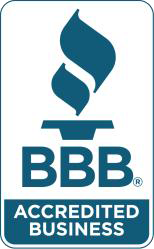
The term “cheap” carries dual meanings. On the one hand, it signifies affordability, a smart option for a budget-conscious person. Conversely, it conveys low-quality, turning an apparently economical purchase into a not-so-smart choice, epitomized by the saying “You get what you pay for”.
Regrettably, differentiating between a thrifty purchase and an item of minimal value is often challenging. This is especially relevant in terms of hearing aids.
With hearing aids, the axiom “you get what you pay for” rings particularly true. This doesn’t necessarily mean opting for the top-tier option, but rather, looking closely at products that boast a price tag too appealing to be legitimate. Companies marketing inexpensive hearing devices frequently omit essential details about their products that consumers should know about.
They often just amplify sound
Increasing the overall volume is usually the only thing cheap “hearing aids” are capable of. If you boost the volume to hear the TV better, you’ll also pick up background noises including the dishwasher, a fan in a different room, a barking dog, or the sound of your house shoes moving across the floor.
The purpose of having a hearing aid is entirely defeated if it also amplifies unwanted sound.
A modern state-of-the-art hearing aid, in comparison, does much more than simply turn the volume up. It expertly manages sound, improving the clarity of desired sounds while tuning out background sound. Authentic hearing aids simulate natural hearing with great accuracy and are custom tuned to your particular hearing needs.
PSAPs vs. Hearing Aids
The Food and Drug Administration has drafted guidelines for those who sell hearing devices and have strict rules as to what can be labeled hearing aids.
Unfortunately, many personal sound amplification products PSAPs are falsely advertised as hearing aids even though they just amplify sound.
Most reputable providers comply. But there are some vendors, particularly online, that might be misinformed about what characterizes the difference between hearing aids and PSAPs, and consequently, they put out misleading claims about their products. Some even incorrectly advertise that they are FDA-approved.
For the majority of kinds of hearing loss they won’t be helpful at all
Most people who lose their hearing will slowly lose particular frequencies of sound before others. For example, you might have no problems hearing a man with a low voice, but have difficulty with a woman’s or child’s voice, finding it challenging to comprehend.
You get overall amplification with cheap hearing aids. However, if you struggle with particular frequencies, just boosting the volume will be insufficient. And turning the overall volume up could lead to added damage to your hearing because the frequencies you don’t have trouble with will be booming in your ears.
High-quality hearing aids can be programmed to boost selected frequencies providing a much better solution. They offer a more customized hearing experience by shifting frequencies you can’t hear very well to frequencies you hear better.
Feedback can be an issue
Cheap hearing aids are typically not custom fit to your ears. A feedback loop is often the outcome of poorly fitting hearing aids. As the speaker in your ear wiggles around, the microphone picks up the sound. What does this sound like? An ear-shattering screech.
They normally won’t help you on your cellphone
When people are looking for a budget-friendly device, they often sacrifice functionality like Bluetooth capability. The lack of Bluetooth becomes critical when considering phone connectivity. Attempting to amplify a cheap hearing aid while on the phone leads to capturing not only the caller’s voice but also the sounds of your ear, lips, clothing, and hair brushing against the phone, making it even more difficult to hear the person on the other end.
On the other hand, digital hearing aids utilize telecoil or Bluetooth technology, creating a wireless connection between your hearing aid and the phone. This advanced feature ensures that when your daughter speaks on the other end, her voice is sent directly into your hearing aids, improving clarity and overall communication.
They’re not designed for individuals with hearing loss
Most individuals would probably be surprised by this. These amplifiers were never intended to treat hearing loss. They were designed to help people who have fairly good hearing hear things a little louder.
If you have very slight hearing loss then cheap devices may help a little. But individuals who actually need hearing aids won’t find these cheaper devices that helpful.
Finding quality, affordable hearing aids
There are lots of ways to get hearing aids affordably. They may even be covered by insurance or other third parties. You can also find financing possibilities, leasing programs, and more affordable brands. The first step is to get a hearing assessment if you suspect you might have hearing loss. Call us today for a consultation, we can help figure out what’s best for you, depending on your amount and type of hearing loss, and make certain you get a pair that won’t break the bank!
References
https://www.fda.gov/medical-devices/consumer-products/hearing-aids
The content of this blog is the intellectual property of MedPB.com and is reprinted here with permission.
The site information is for educational and informational purposes only and does not constitute medical advice. To receive a personalized free hearing test and hearing loss consultation, call today to set up an appointment.









